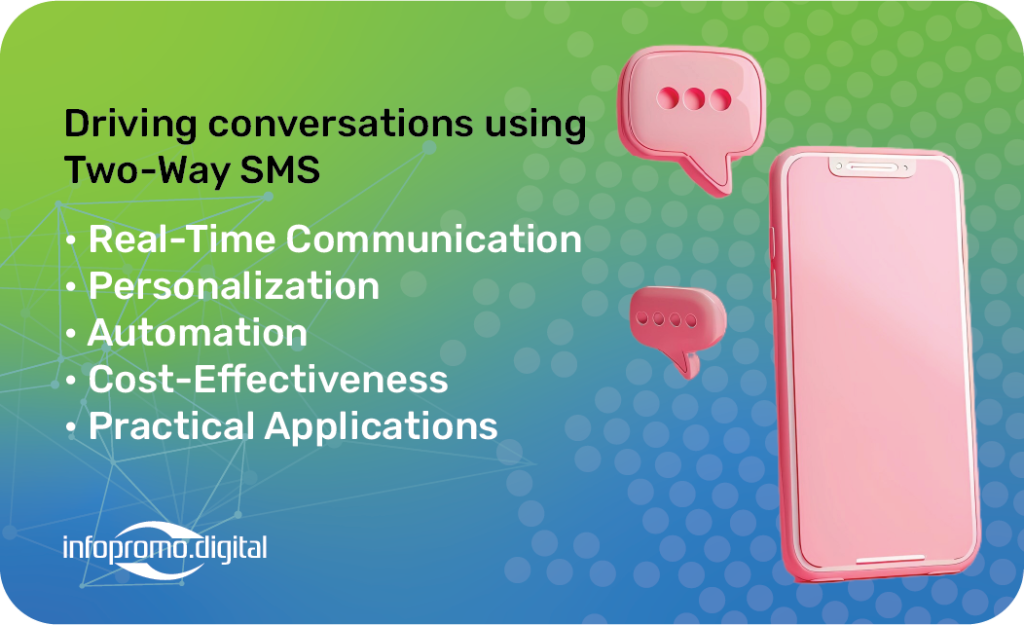
In the modern digital landscape, communication technology continues to evolve, offering businesses innovative ways to connect with their customers. One such powerful tool is two-way SMS interaction. This technology enables real-time, personalized communication that can significantly enhance customer engagement and satisfaction. In this blog, we explore the technology behind two-way SMS interactions and how businesses can leverage it effectively.

Understanding Two-Way SMS Technology
Two-way SMS interaction allows for a seamless exchange of messages between businesses and customers. Unlike traditional one-way SMS, where messages are sent without the expectation of a reply, two-way SMS invites and facilitates a conversation. This interaction is made possible through advanced SMS gateways and APIs, which enable automated responses and personalized messaging.
Key Features of Two-Way SMS
- Real-Time Communication: Two-way SMS provides instant communication, ensuring that customers receive timely responses to their inquiries. This immediacy helps in building trust and loyalty.
- Personalization: Businesses can tailor messages based on customer data, making the communication more relevant and engaging.
- Automation: Automated replies and workflows can handle common inquiries, freeing up human resources for more complex tasks.
- Scalability: Two-way SMS systems can handle a large volume of messages, making it suitable for businesses of all sizes.
- Integration: SMS platforms can integrate with CRM systems, allowing for a unified customer communication strategy.
Benefits for Businesses
Enhanced Customer Engagement: Two-way SMS creates a dialogue with customers, making them feel valued and heard. This interaction fosters a stronger relationship and improves customer satisfaction.
Increased Efficiency: Automation in two-way SMS reduces the need for manual responses, allowing businesses to handle inquiries more efficiently and allocate resources to more strategic tasks.
Higher Conversion Rates: Personalized and timely messages can drive higher conversion rates. Whether it’s for marketing promotions, appointment reminders, or customer support, two-way SMS ensures that the message reaches the right audience at the right time.
Cost-Effectiveness: Compared to other communication channels, SMS is relatively low-cost and has a high open rate. This makes two-way SMS a cost-effective solution for businesses looking to improve their communication strategy.

Practical Applications
- Customer Support: Two-way SMS can be used to provide instant support to customers, answering their queries and resolving issues promptly.
- Marketing Campaigns: Businesses can send personalized offers and promotions to customers, encouraging higher engagement and sales.
- Appointment Reminders: Automated SMS reminders help reduce no-shows and ensure that customers are aware of their appointments.
- Feedback Collection: Two-way SMS can be used to gather customer feedback, providing valuable insights into customer preferences and satisfaction.
- Order Tracking: Businesses can send order updates and tracking information via SMS, keeping customers informed about their purchases.
Implementing Two-Way SMS in Your Business
To effectively leverage two-way SMS, businesses should consider the following steps:
- Choose the Right Platform: Select an SMS gateway or platform that offers robust features and integration capabilities like Infopromo
- Segment Your Audience: Use customer data to segment your audience and tailor messages accordingly.
- Automate Responses: Set up automated workflows to handle common inquiries and tasks.
- Monitor and Optimize: Regularly review the performance of your SMS campaigns and make necessary adjustments to improve outcomes.
Conclusion
Two-way SMS technology offers businesses a powerful tool for enhancing customer communication. By leveraging real-time, personalized interactions, businesses can improve engagement, increase efficiency, and drive higher conversion rates. As technology continues to advance, two-way SMS will remain a vital component of a successful communication strategy.




